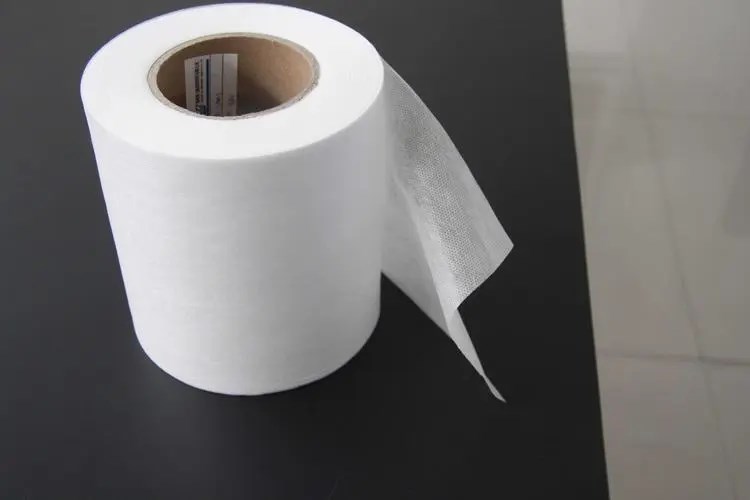
הצהרת פרטיות: הפרטיות שלך חשובה לנו מאוד. החברה שלנו מבטיחה לא לחשוף את המידע האישי שלך לכל אקסני עם ההרשאות המפורשות שלך.
Huatao Lover Nonwoven Fabric Spunbond Nonwoven Fabric Introduction:
In the non-woven fabric manufacturing method, since the spunbond method has obvious advantages in terms of manufacturing technology, product performance, and production efficiency, it has achieved rapid development attracting worldwide attention in the past 20 years.
Now about 40% to 50% of non-woven fabrics are produced by melt spinning (including spunbonded, melt-blown, and a combination of the two). This melt spinning method is used in the total output of each region.
The proportions in the United States accounted for 50% in the United States, 37% in Europe, and 41% in Sakamoto. It can be seen from the data that the advanced countries all adopt the melt spinning method as the main production method of non-woven fabrics. In the most developed North America region in 1998, the market for spunbonded nonwovens accounted for over 54% of the total nonwovens market.
The research of spunbonded non-woven fabrics was developed by DuPont and Freudenberg at the same time in the US and Europe at the end of the 50's.
In the late 1960s, countries around the world began to produce spunbonded nonwovens. The Sakamoto was started in the 1970s. In the mid-1980s, the Asia-Pacific region started production with the introduction of technology.
The important reason for the rapid development of the spunbond method is that it uses synthetic polymers as raw materials. This method utilizes the principle of chemical fiber spinning, continuous filaments in the process of polymer spinning, and is made by direct bonding after web formation after spinning. Non-woven fabrics, manufacturing method is very simple and fast, compared with dry non-woven processing technology, eliminating the need for a series of cumbersome intermediate processes such as fiber curling, cutting, packing, conveying, mixing, carding, etc. This continuous, large The most significant effect of batch production is to reduce the cost of spunbonded products, stabilize the quality, and provide strong market competitiveness. This can be applied to the textile, paper, and film markets in a variety of uses, including disposable and durable applications. Secondly, due to the large amount of polypropylene used as the main raw material for spunbonded nonwovens, many of its advantages in terms of price, processing, and production costs have greatly promoted the continuous development of the spunbonded nonwovens industry. In addition, the spunbonded nonwoven fabrics have excellent mechanical properties, and their tensile strength, elongation at break, and tear strength are superior to those of dry, wet, and melt-blown nonwoven fabrics, especially in recent years. The rapid development in the scale of the production line, technology and equipment and product market expansion has greatly expanded the application of spunbonded nonwovens.
The biggest difference between spunbond production process and chemical fiber spinning is the use of air drafting and direct web formation. Therefore, the draft of the spunbond method becomes the core issue of the technology. In the past, the drafting method was mechanical drafting, and the fiber monofilament was used. Thicker, uneven laying. At present, the air-jet drafting technology has been used in all spunbond production facilities around the world. Due to the different drafting methods, there are three different forms of spunbond production lines: tubular drafting, wide-slit drafting, and narrow slotted drafting. Extend and wait.
The spunbond non-woven technology has always been to improve the production line capacity and solve the problems of non-woven fabric uniformity, covering, rough feel, etc., to improve the strength, flexibility, uniformity and comfort of spunbonded non-woven fabrics. , hygroscopicity and other properties.
Dandan Spunbond nonwovens can directly improve the flexibility and comfort of spunbond nonwovens. However, the spunbonding process has a technical bottleneck. For example, fine denier can increase the number of fiber units per unit area of the spunbonded nonwoven fabric, and the "bonding point" between the fibers and the fibers increases. Products will also become more uniform and coverage will increase.
Huatao Group mainly supply nonwoven mesh belt, industrial felts, and belt filter cloth, etc.
For further information, please feel free to contact us at team3@huataogroup.com.

August 21, 2023
August 21, 2023
October 08, 2024
December 14, 2023
August 21, 2023
August 21, 2023
שלח לחבר
August 21, 2023
August 21, 2023
October 08, 2024
December 14, 2023
August 21, 2023
August 21, 2023

הצהרת פרטיות: הפרטיות שלך חשובה לנו מאוד. החברה שלנו מבטיחה לא לחשוף את המידע האישי שלך לכל אקסני עם ההרשאות המפורשות שלך.

מלא מידע נוסף כך שיוכל ליצור איתך קשר מהר יותר
הצהרת פרטיות: הפרטיות שלך חשובה לנו מאוד. החברה שלנו מבטיחה לא לחשוף את המידע האישי שלך לכל אקסני עם ההרשאות המפורשות שלך.